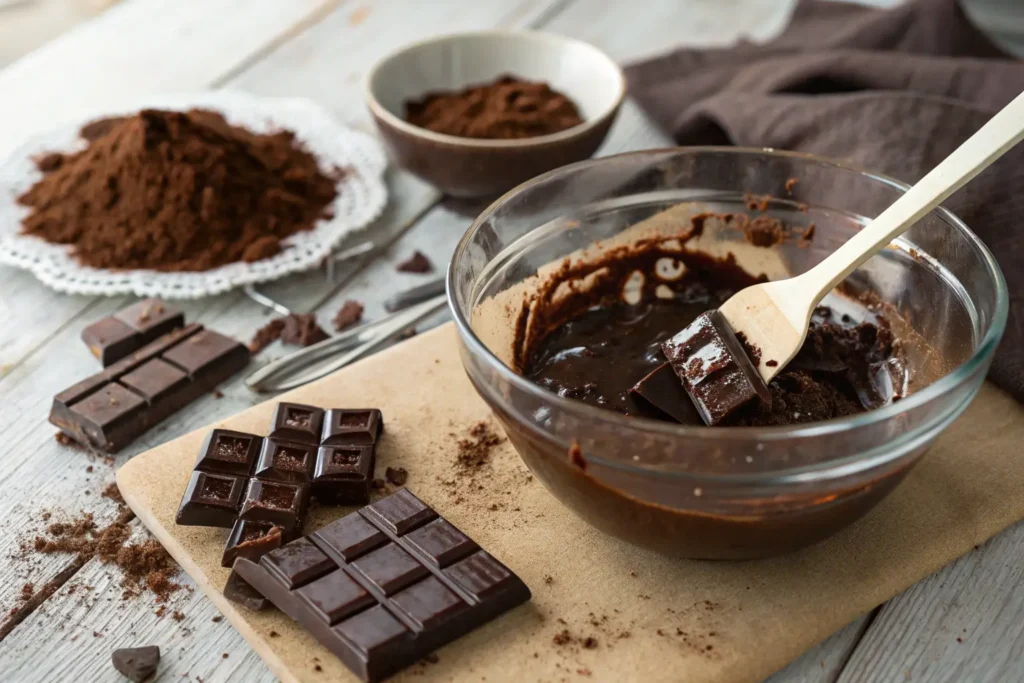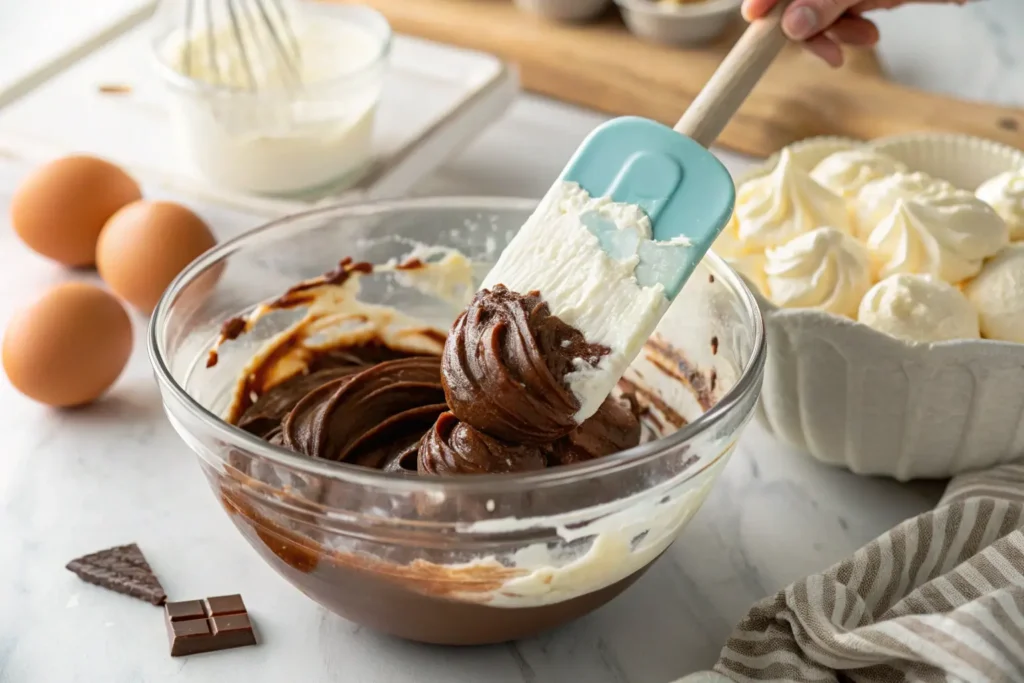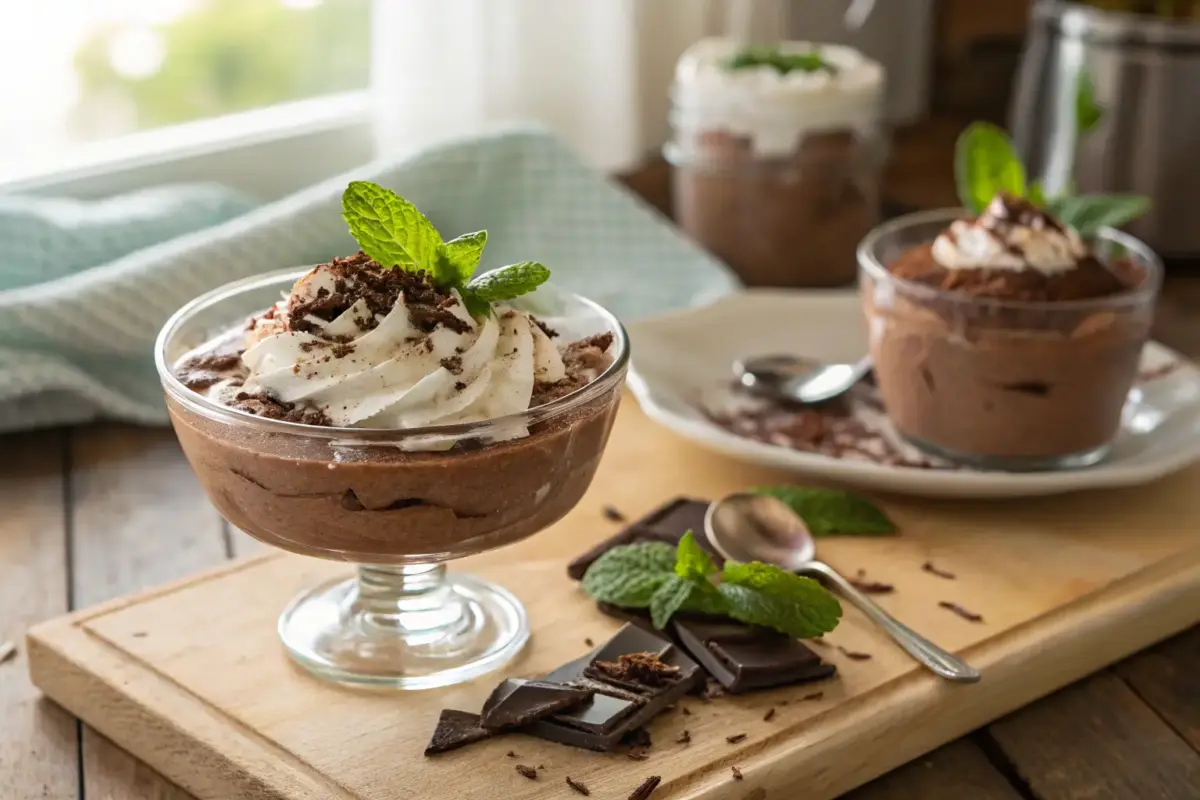Introduction
There’s something magical about chocolate mousse. It’s light, creamy, and oh-so-indulgent. But let’s be real—it’s not the easiest dessert to make. If you’ve ever wondered, “What can go wrong when making chocolate mousse?”, you’re not alone. From choosing the wrong chocolate to mishandling your eggs, a lot can trip you up. But don’t worry, we’re here to guide you through these common pitfalls so your mousse turns out perfect every time.
Choosing the Wrong Type of Chocolate
One of the first and biggest mistakes is picking the wrong chocolate. The kind of chocolate you use sets the tone for your mousse, so you want to get it right.
The Impact of Low-Quality Chocolate
Using low-quality chocolate is a recipe for disaster. Cheap chocolate often has too much sugar and not enough cocoa butter, which can make your mousse overly sweet and clumpy. If you’re asking yourself, “What can go wrong when making chocolate mousse?”, this is one of the most common culprits. Stick to high-quality dark chocolate with a smooth texture for the best results. You can even explore alternatives like cottage cheese chocolate mousse for a unique twist.
Overlooking Cocoa Percentage in Recipes
Cocoa percentage matters more than you might think. If your recipe calls for a specific percentage—say, 60% dark chocolate—don’t ignore it. Using a chocolate that’s too bitter or too sweet can throw off the balance of flavors in your mousse. Always check the packaging before you buy, and choose chocolate that matches your recipe’s requirements.
Incorrectly Melting Chocolate

Melting chocolate might seem simple, but it’s actually one of those steps where things can go south fast. If you’ve ever thought, “What can go wrong when making chocolate mousse?”, this step might be the answer.
Problems with Overheating
Overheating chocolate is a classic mistake. When chocolate gets too hot, it seizes up and becomes grainy—a total nightmare for your mousse. The trick is to melt it slowly and gently. Use a double boiler or microwave in short bursts, stirring between each interval to keep the chocolate silky smooth.
Issues from Mixing Water into Melted Chocolate
Water and chocolate are sworn enemies. Even a single drop of water can cause your melted chocolate to seize, turning it into a lumpy mess. Always dry your utensils and bowls thoroughly before you start melting. This simple step can save you a ton of frustration when making chocolate mousse.
Misjudging Egg Preparation
Eggs play a huge role in giving mousse its airy, delicate texture. But they can also be tricky to work with. If you’re wondering, “What can go wrong when making chocolate mousse?”, mishandling your egg whites is often the answer.
Underbeating Egg Whites
Underbeaten egg whites are a common mistake, especially for beginners. If the whites aren’t whipped to stiff peaks, your mousse won’t have that light, airy texture. Take your time and watch for the telltale peaks that stand tall when you lift the whisk.
Overbeating Egg Whites and the Resulting Texture Problems
On the flip side, overbeating egg whites can be just as problematic. When you overbeat, the whites become dry and grainy, which makes them difficult to fold into the chocolate mixture. This can lead to a dense, uneven mousse. The key is to stop as soon as the peaks hold their shape but still look glossy.
When it comes to chocolate mousse, the ingredients and preparation make all the difference. By choosing the right chocolate, melting it correctly, and handling your eggs with care, you’ll be well on your way to mastering this delicious dessert. And the next time someone asks, “What can go wrong when making chocolate mousse?”, you’ll know exactly what to say—and how to avoid it.
Skipping the Step of Tempering Ingredients
When making chocolate mousse, one of the easiest mistakes to make is skipping the tempering step. If you’re wondering, “What can go wrong when making chocolate mousse?”, ignoring temperature differences is a big one. Tempering your ingredients properly ensures they combine smoothly, giving you that velvety, airy texture every mousse should have.
Temperature Differences That Cause Curdling
One of the most common problems is combining hot melted chocolate with cold ingredients. If the temperatures aren’t balanced, the chocolate can seize or curdle, leaving you with a grainy mess instead of a smooth mousse. To avoid this, let your melted chocolate cool slightly before mixing, and make sure your eggs or cream are at room temperature. This small adjustment can save you from a mousse disaster.
Achieving the Right Consistency by Balancing Heat
Temperature also plays a role in consistency. If your melted chocolate is too cold, it can harden when mixed with other ingredients. If it’s too hot, it might cook your eggs or curdle your cream. The sweet spot is a warm, fluid chocolate that blends easily. And let’s face it, no one wants to ruin their mousse over something as simple as not waiting an extra minute or two!
Poor Folding Technique

Folding might seem like just another step in the recipe, but it’s actually a critical moment. If you’ve ever asked yourself, “What can go wrong when making chocolate mousse?”, the answer could be right here. The way you fold ingredients determines the final texture of your mousse.
Loss of Air During Mixing
One of the biggest folding mistakes is being too aggressive. Whipped cream and egg whites are delicate, and overmixing can knock the air right out of them. The result? A flat, dense mousse that’s more like pudding. Instead, fold gently with a spatula, using a scooping motion to combine the ingredients while preserving as much air as possible.
Uneven Incorporation of Ingredients
On the flip side, underfolding can leave you with streaks of unmixed chocolate or clumps of cream. Not only does this affect the texture, but it also means you’ll get uneven bites—some rich, some bland. Take your time and make sure everything is well incorporated, but still light and airy. Think of it as a balance between patience and finesse.
Failing to Stabilize the Mousse
If you’ve gotten this far and still find yourself asking, “What can go wrong when making chocolate mousse?”, it’s time to talk about stabilization. A properly stabilized mousse holds its shape, whether you’re serving it in bowls, piping it onto cakes, or plating it like a pro.
The Role of Cream and How It Can Go Wrong
Whipped cream is often the backbone of a good mousse, but getting it right can be tricky. Overwhipping the cream can make it grainy, while underwhipping leaves it too soft to provide structure. Aim for medium peaks—firm enough to hold their shape, but still soft enough to blend smoothly with the other ingredients. And remember, always fold the cream in last for the best texture.
Using Gelatin Correctly for Structure
For some recipes, gelatin is the secret weapon for stability. But if you don’t handle it properly, it can create lumps or an unpleasant rubbery texture. Always bloom your gelatin in cold water first, then dissolve it completely in a warm liquid before adding it to the mousse. This ensures it distributes evenly, giving your dessert a silky, stable texture. If you’re still thinking, “What can go wrong when making chocolate mousse?”, improper use of gelatin is a mistake even experienced bakers can make.
Common Questions About These Techniques
At this point, you might be wondering: why all the fuss over these small details? Well, chocolate mousse is all about balance. Too rough with your folding? You lose the air. Skip tempering? Your chocolate clumps. It’s these tiny mistakes that add up, leaving you with a dessert that’s just okay, instead of show-stopping. And isn’t the whole point of making mousse to impress—whether it’s friends, family, or just yourself after a long day?
When it comes to mixing and folding techniques, the devil is in the details. Temper your ingredients to avoid curdling, fold gently to keep the air, and stabilize with care for a mousse that’s both delicious and professional-looking. The next time someone asks, “What can go wrong when making chocolate mousse?”, you’ll not only have an answer—you’ll have the skills to fix it.
Ignoring Resting Time
If there’s one area where impatience can ruin your dessert, it’s skipping or mishandling the resting time. Seriously, if you’ve been asking yourself, “What can go wrong when making chocolate mousse?”, not allowing it to chill properly is a biggie. Resting time lets the flavors develop and the mousse set, giving it that irresistible texture.
How Insufficient Chilling Affects Flavor and Texture
Not chilling the mousse long enough is a common rookie mistake. Without enough time in the fridge, the mousse won’t firm up properly, leaving you with a soupy mess instead of a luscious dessert. Plan for at least 4–6 hours of chilling time (or overnight, if you’re feeling patient).
Over-chilling Leading to Hard Mousse
On the flip side, over-chilling can also cause problems. If the mousse sits in the fridge for too long, it can become overly firm, making it difficult to serve or eat. For best results, remove the mousse from the fridge about 10 minutes before serving to let it soften slightly and reach that perfect, spoonable consistency.
Overcomplicating the Recipe
Chocolate mousse shines because of its simplicity, but it’s easy to get carried away with too many add-ins or flavors. If you’ve ever thought, “What can go wrong when making chocolate mousse?”, adding unnecessary extras might be your answer.
Adding Too Many Flavors That Overpower Chocolate
Chocolate should always be the star of the show. Adding too many flavors—like liqueurs, spices, or fruit purees—can overshadow the chocolate’s richness. Instead, keep it simple. A hint of vanilla or a splash of coffee can enhance the flavor without stealing the spotlight.
Why Simplicity Often Yields the Best Results
Sometimes, less really is more. The classic combination of chocolate, cream, and eggs is hard to beat. By sticking to the basics, you’ll create a mousse that’s elegant, delicious, and universally loved. And let’s be honest, no one ever complained about a chocolate mousse being “too chocolatey.”
Using Improper Tools
Your kitchen tools might seem like an afterthought, but they can make or break your mousse. If you’re still wondering, “What can go wrong when making chocolate mousse?”, using the wrong equipment might be the culprit.
How Utensil Choices Affect Mousse Texture
Using a whisk that’s too small or a bowl that’s too shallow can make whipping cream or egg whites a hassle. And don’t even get me started on folding with a metal spoon—it’s a recipe for deflating all that beautiful air. Stick to a silicone spatula and a properly sized mixing bowl for the best results.
The Role of Proper Bowls and Mixers
Metal or glass bowls are your best bet for whipping cream and egg whites because they provide a stable, clean surface. Plastic bowls can retain grease, which makes it harder to achieve the stiff peaks you need for mousse. A stand mixer can also save you a ton of effort—just be careful not to overwhip!
Misjudging Portion Sizes
Presentation is everything, and portion sizes are key to creating a dessert that’s as beautiful as it is delicious. If you’ve been asking yourself, “What can go wrong when making chocolate mousse?”, portioning mistakes might be what’s tripping you up.
How Overfilling Dishes Can Impact Presentation
Overfilling your serving dishes can make the mousse look messy and unappetizing. Leave a little space at the top for garnishes like whipped cream, shaved chocolate, or fresh berries. It’s those small touches that make your mousse look like it came straight from a fancy restaurant.
Serving at the Wrong Temperature
Serving mousse that’s too warm or too cold can throw off the entire eating experience. Ideally, mousse should be served slightly chilled—cold enough to hold its shape, but not so cold that it loses its creamy texture. Let it sit at room temperature for a few minutes before serving to hit that sweet spot.
FAQs
What are common mistakes when making mousse?
Common mistakes include using low-quality chocolate, over- or under-whipping cream or egg whites, skipping the tempering step, and failing to chill the mousse properly. Each of these can impact the texture, flavor, or appearance of your dessert.
How to tell if chocolate mousse is bad?
Bad chocolate mousse might have a sour smell, a grainy texture, or liquid separation. If it’s been sitting in the fridge for more than 3–4 days, it’s best to discard it to avoid foodborne illness.
What is very crucial when making a mousse?
Temperature control and gentle folding are crucial when making mousse. Both ensure the ingredients blend smoothly and maintain their airy texture. Chilling time is also important for achieving the right consistency.
Why did my chocolate mousse not set?
Chocolate mousse may fail to set if you didn’t whip the cream or egg whites enough, didn’t chill it long enough, or didn’t stabilize it properly (e.g., with gelatin). Always follow the recipe closely for the best results.
Conclusion
Creating the perfect chocolate mousse isn’t as intimidating as it might seem. By avoiding common mistakes like skipping tempering, overmixing, or misjudging chilling time, you’ll be well on your way to dessert success. And if you ever find yourself wondering, “What can go wrong when making chocolate mousse?”, you now have the answers—and the solutions. Keep it simple, take your time, and enjoy the process. Your mousse will thank you!


1 thought on “What Can Go Wrong When Making Chocolate Mousse? 10 Simple Fixes for Perfect Results!”